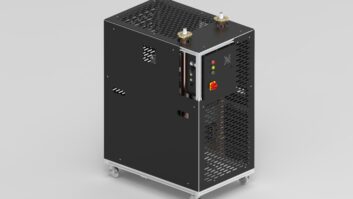Antenna companies are reacting to the FCC decision allowing computer modeling of directional FM antennas.
“May 19, 2022 is a monumental day for FM broadcasters,” wrote Dielectric in a statement. The manufacturer pressed for the change, along with Shively, RFS and Jampro, as well as broadcast group Educational Media Foundation.
“The FCC adopting new rules allowing the use of computer modeling will ease product-to-market timelines, helping broadcasters upgrade facilities quickly,” it wrote when contacted for comment by Radio World.
“In addition, the increased accuracy and the ability to run infinite patterns to maximize on FCC protections will allow broadcasters ease of mind knowing they are getting the best possible solution, all while not having to wait the traditional timelines for range testing/optimizing.
Dielectric said it has been developing artificial intelligence-based processes to automate the optimization of FM antenna geometry for its FM projects. It said its process “will ensure that the geometry for each installation will best fit the broadcaster’s desired radiation patterns while maintaining FCC compliance.”
“At the end of the day,” the company concluded, “their listeners will benefit from this rule change. Dielectric sees this change as significant in the history of FM, and is fully prepared to help all broadcasters seek the best possible solution.”
Radio World also invited comment from Electronics Research Inc., which had opposed the rule change.
“ERI raised some concerns regarding eliminating the requirement to provide measured pattern data with the license filings for directional FM antennas,” wrote Bill Harland, vice president of marketing.
“These objections were based on our experience from decades of full-scale range measurements of directional and nondirectional FM antennas and our experience using computer models to generate pattern predictions for FM arrays.”
Harland said ERI has always had the capability to use computer modeling for directional FM antenna design.
“We will offer that service as an option for directional and nondirectional FM antenna systems. ERI will continue to offer directional FM antennas that include pattern development on our test range and measured results for customer approval and filing with the FCC license application.”
He said the company will also continue to offer full-scale range pattern studies and pattern optimization as optional services. “They are available for all single-channel and multi-channel FM antenna products.”
“We believe ERI’s 50-acre far-field antenna test range is the best facility of its kind and has been in use longer than the antenna measurement facilities used by our competitors. As we showed in our filings in this FCC proceeding, the accuracy of the range and the consistency of its measured results support that belief.”







